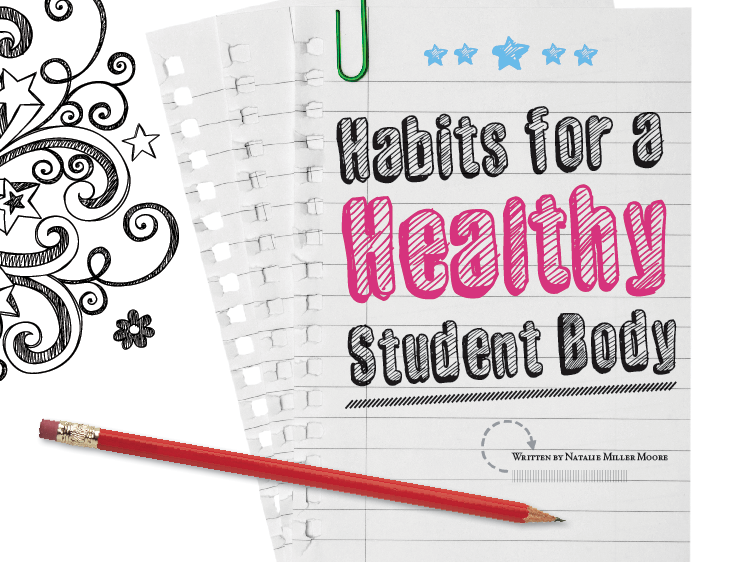Back-to-school season doesn’t just mean new school supplies are coming home with your kids. Take steps to prevent ear infections, viruses and the common cold.
Written by Natalie Miller Moore
In the fall, kids head back to school looking forward to a new teacher and new friends—but they pick up a few other new things, too: germs. Local doctors say they see a spike in illness around the second or third week of school, as students who have previously been separated during the summer reunite and share germs.
“It’s not an increase in the number of infections, but they are spread around more easily. Particularly [among] the smaller kids, who do less hand-washing and more touching of their faces,” says Dr. Michael Rogowski, of MD Express Urgent Care in Hampton Roads.
Rogowski recently published an article about the increase in ear infections as school starts, which he attributes to cold viruses or other respiratory issues that turn into ear infections. “It typically starts with a cold or other congestion like allergies, and the mucus plugs up the eustachian tubes, where they become infected,” he says.
Although urgent care centers and pediatricians see an upswing in illnesses, it’s the school nurse who is on the front line in the back-to-school war on germs.
“I think any time children spend more time inside with a lot of other children, the chances of spreading viruses increases,” says Janice Fowler, M.S.N., R.N., Supervisor of Health Services with Williamsburg-James City County Schools.
Luckily, most illnesses school nurses see are common and can be managed, such as upper respiratory infections, allergies or chronic illnesses like asthma or diabetes. More serious illnesses are prevented most of the time by the Virginia requirement that students have certain immunizations before coming to school.
“Keeping the students’ immunizations up-to-date is an important prevention practice for students and adults. Getting the flu vaccine yearly is also very important,” Fowler says.
Sue Cummings, R.N., at the University of Richmond Student Health Center, has the additional challenge of students living together in dorms—providing even more opportunities to share germs.
“Overall, the highest percentage of diagnoses that we see are for upper respiratory infections, but that is the case throughout the year. We probably see more of them when the weather gets colder and more people stay indoors, confined to closer quarters, where they can spread germs more easily,” Cummings says.
Additionally, a college campus has students coming from different geographic regions. “In years past, with students returning to campus, there were concerns to be on the lookout for H1N1 or measles, as there were outbreaks. And with students coming from all across the United States, they may be bringing disease exposure from other areas,” she says.
No matter what age, much of the best health advice is simple: Eat well, get enough rest and exercise, and wash your hands often.
Fowler says parents should stress the importance of health habits. “Children need to get plenty of sleep and physical activity, have a healthy and nutritious diet and drink plenty of water to help them stay healthy,” she says. Adults need to do these things as well, especially to set good examples for their children.
Once children move out on their own, they tend to need the same reminders. “The best way for students to stay healthy is to make sure that they take good care of themselves; eat healthy, brush their teeth regularly, get eight hours of sleep, exercise regularly, and wash their hands, wash their hands, and oh, by the way, did I say, wash their hands?” says Cummings. Because college students often eat on the go, either at fast food restaurants or dining halls, they often forget to wash their hands before grabbing a meal.
Fowler agrees that hand washing is important, and adds that teaching children the best ways to cough and sneeze without spreading germs is also imperative.
“Children should cough and sneeze in the corners of their elbows to limit the transmission of infectious particles in the air [from the secretions from the cough or sneeze] … Parents can model this and practice this at home with their children. Simple things like providing tissues so they are more likely to wipe their noses with these instead of their hands or their arms [are also suggested]. It is also important to show them how to discard of the tissues once used,” she says.
Many school districts increase awareness campaigns near flu season, through school newsletters, Web sites and announcements, but school nurses see fluctuations for different reasons throughout the year.
Fowler said younger children may be more susceptible to getting cold viruses as they build up immunity over the years. Allergies are another cause of illness and visits to the nurse’s office, but not just in the spring—increased clinical events also occur in the fall.
However, as much as parents and school staff encourage these healthy habits to guard children and students against viruses, they do get sick. A few reminders from your friendly school nurses: Do all you can to stay healthy, and practice preventive measures like coughing and sneezing into your arms and washing hands or using antibacterial gel often. If you or your child gets sick, stay home until symptoms are gone. Staying home and limiting your contact with others prevents spreading the infection.

